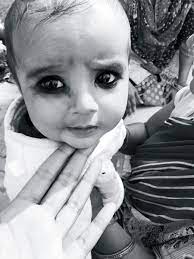Understand the child protection policy in India.
Protecting the nation’s children from all kinds of violence,
abuse, and exploitation, India has a wide range of policies to protect its
children. Child protection policy in India is increasingly accepted as a
core constituent of social development. The issue is in enforcing the policies
due to inadequate human resource capacity on-ground, prevention, and
rehabilitation services. Eventually, millions of children are prone to violence,
abuse, and exploitation that takes place in all settings including home,
school, child care institutions, workplace, and in the community. Often
violence is committed by someone known to the child.
India has a comprehensive framework addressing the child
protection policy in India, providing opportunities to ensure that all
children have equal access to quality protection services. The main child
protection policies in India include The Juvenile Justice Act/Care and
Protection (2000, amended in 2015); the Child Marriage Prohibition Act (2006);
the Protection of Children from Sexual Offences Act (2012) and the Child Labour
Prohibition and Regulation (1986, amended in 2016). Notable efforts have been
made to set up fast-track courts and deal with cybercrime against children and
women.
Violence against children continues to take place even to
date and remains a brutal reality for several children from all socio-economic
segments in India. Both girls and boys in India face the issue of early
marriage, domestic abuse, sexual violence, violence at home and even in school,
trafficking, virtual violence, child labor, and bullying, which have
long-lasting consequences on children’s lives. Exact data in all these aspects
is not sufficient but overall India is becoming increasingly aware of violence
against children, especially sexual abuse. Several cases that may have earlier
gone unnoticed, are now being reported.
India has expressed its commitment to banishing child
marriage through numerous policies, laws, activities, and programs. Yet, one in
three of the world’s child brides live in India, and the persistence of child
marriage continues to remain a potential obstacle to India’s likelihood of
achieving Sustainable Development Goal 5 by the year 2030.
In the Indian context, child labor remains a compound
drawback. Despite enterprising legislative measures and policies in India to
combat the problem, the decline in children working has been less progressive
than expected. Children are most often found working in agriculture and
households, with girls often being invisible.
Data on sexual violence is scarce and is mainly based on
reporting of cases. This means that figures underestimate the magnitude of the
problem, especially as many cases go unreported. From the cases that are
reported it’s known that sexual abusers are mainly male and often individuals
known to the child.
We all need to play an active role in reinforcing the child
protection policy in India.
Want more information, visit https://www.savethechildren.in/ now.

Comments
Post a Comment